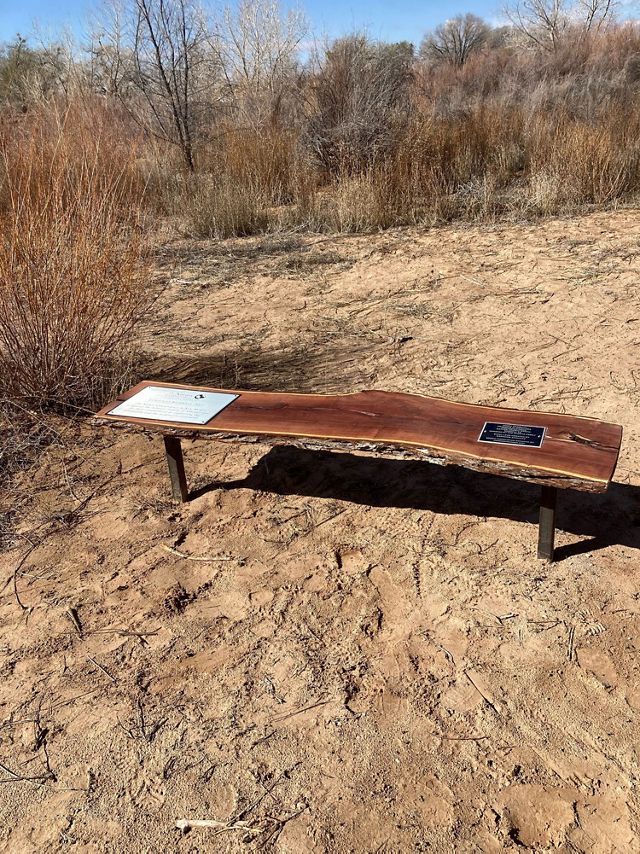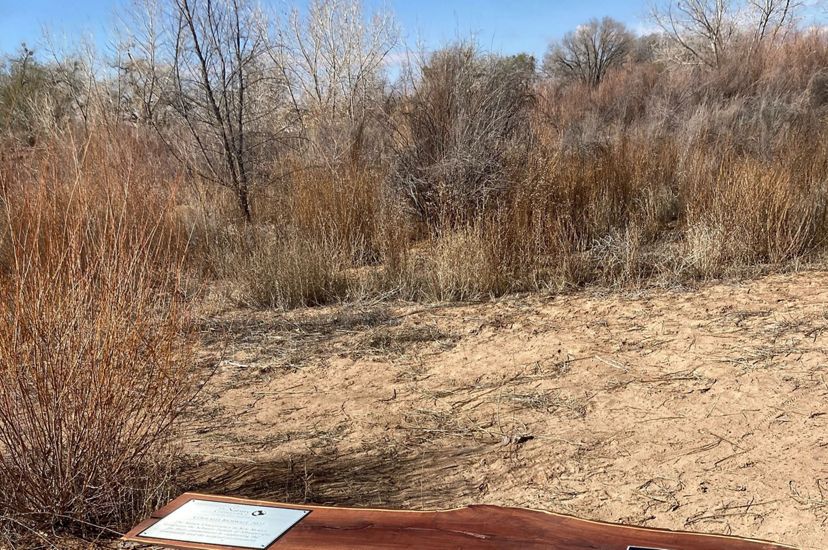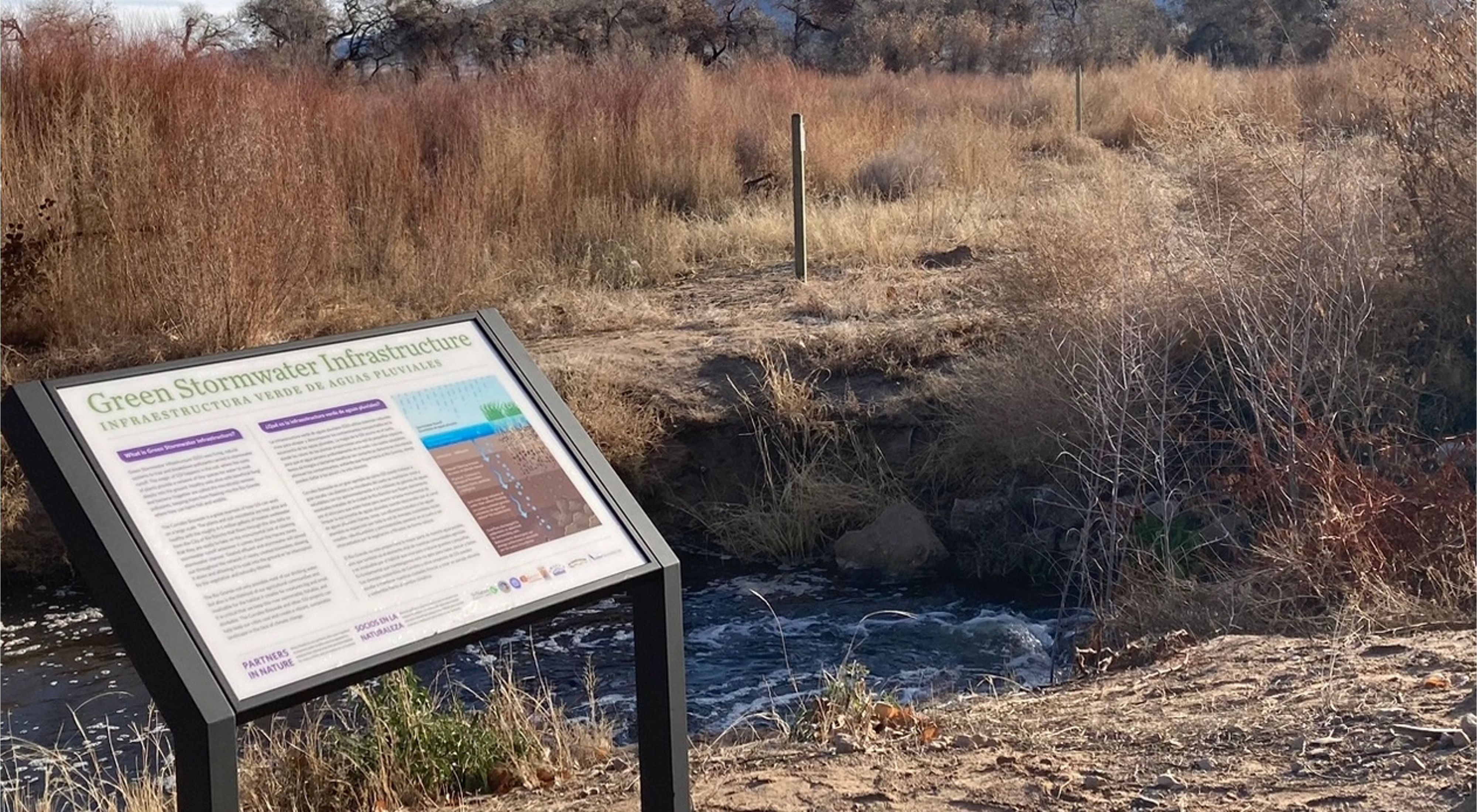Media Contacts
-
Tracey Stone
The Nature Conservancy
Phone: 602.738.1586
Email: tstone@tnc.org
Sitting on a bench or walking around the Harvey Jones Channel in Corrales, you’ll be surrounded by cottonwood and willow trees, see and hear local wildlife and birds, and have a full view of the beautiful Sandia Mountains. New interpretive signs that share the significance of this place for people, water and wildlife are now in place for all to enjoy.
This conservation project utilizes bioswales, a nature-based solution. This public-private, multi-year partnership reconnects native vegetation in a historic floodplain with groundwater by creating a series of channels that naturally and slowly filter pollutants from stormwater before it is carried into the Rio Grande. These wetland channels help improve 10 acres of riparian habitat for fish, birds and other wildlife. The wetlands benefit from existing waterflows on site, which include a wastewater outfall for the City of Rio Rancho, releasing 4-5 million gallons of water each day, and significant stormwater runoff, which brings in an additional average of 4.5 million gallons each year.
It was no easy task.
Crews first removed 18,000 yards of dirt to extend existing channels and create a wetland area. Then, partners and volunteers planted 28,000 willow trees, 60 cottonwood trees and hundreds of shrubs and wetland plants and started removing nonnative plants to create a healthier habitat for birds, wildlife and people.
Quote: Glen Catlin Ami, Program Coordinator
Willows are steeped in Indigenous cultures. We use them for prayer sticks during ceremonies and for medicinal purposes. We want future generations to be able to enjoy these cultural benefits too.
The choice of planting willows in this area was an important one to Glen Catlin Ami, the Ancestral Lands Conservation Corps program coordinator, who assisted with initial plantings.
“Willows are steeped in Indigenous cultures. We use them for prayer sticks during ceremonies and for medicinal purposes. We want future generations to be able to enjoy these cultural benefits too.”


“This work is key for climate adaptation and water security in New Mexico, demonstrating large-scale community engagement and interest where people can enjoy the benefits of conservation at work,” says Melisa McLamb, conservation manager for The Nature Conservancy.
The incredible, multi-year effort has created a beautiful home for birds and wildlife and a place where you can stretch your legs, calm your mind or revel in nature all around you.
Partners include Southern Sandoval County Arroyo Flood Control Authority, Village of Corrales, City of Rio Rancho, Middle Rio Grande Conservancy District, Ancestral Lands Conservation Corps, Rio Grande Return and Albuquerque Metro Arroyo Flood Control Authority.
Directions to Harvey Jones Channel
You can access the Harvey Jones Channel via the parking lot on the east end of Romero Rd (35°15'21.9"N 106°35'47.8"W) in Corrales. From the parking lot, take the levee or trails through the bosque, heading north. It’s about a half-mile walk from the parking lot to the site.
The Nature Conservancy is a global conservation organization dedicated to conserving the lands and waters on which all life depends. Guided by science, we create innovative, on-the-ground solutions to our world’s toughest challenges so that nature and people can thrive together. We are tackling climate change, conserving lands, waters and oceans at an unprecedented scale, providing food and water sustainably and helping make cities more sustainable. Working in more than 70 countries and territories, we use a collaborative approach that engages local communities, governments, the private sector, and other partners. To learn more, visit nature.org or follow @nature_press on Twitter.
